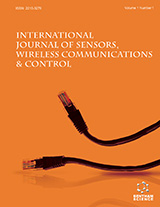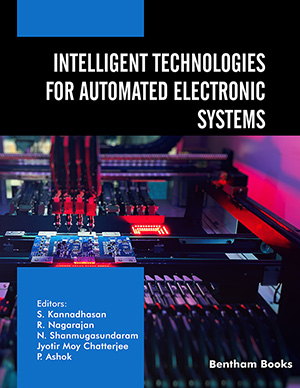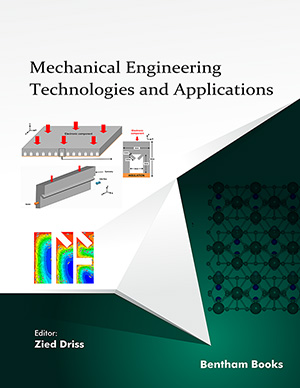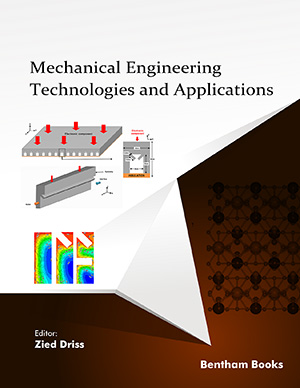Abstract
Background: Dementia causes a slow decline in the cognitive impairing abilities in the behavior of the elders. This suppresses the elders from living independently due to their wandering tendencies. To reduce any kind of harm to such patients, consistent supervision is required by the caretaker. The existing location tracking methods consume high energy to provide an accurate location.
Introduction: Some systems have been developed to track the wandering pattern of patients in indoor and outdoor environments. Initially, the methodologies used for location tracking use sensors and accelerometers based on embedded programs. However, these methods do not provide high accuracy and are hence unreliable.
Methods: In this paper, a study on the location detection algorithms based upon frequency of visit, navigation, geofences, and movement patterns is carried out. Many other algorithms based on location tracking are discussed in this study.
Results: The algorithms are compared on the basis of accuracy, recall rate, detection rate, and false alarm rate. The algorithms based on geofence provide a 95% detection rate, 95% accuracy, less than 3% false alarm rate, and less than 1 ms latency. The algorithms based on navigation provide 85% detection rate, 95% accuracy, less than 2% false alarm rate, and less than 10 s latency, while the algorithms based on movement pattern offer 90% detection rate, 90% accuracy, 5% false alarm rate, and 12 s latency.
Conclusion: The study shows that geofences provide the best solution for detecting the location of patients.
Keywords: Dementia, geofence, location tracking, location detection, GPS, sensors.
[http://dx.doi.org/10.1109/BWCCA.2014.127]
[http://dx.doi.org/10.1007/s11036-019-01329-0]
[http://dx.doi.org/10.1007/978-3-030-32079-9_20]
[http://dx.doi.org/10.1145/3351556.3351558]
[http://dx.doi.org/10.1007/978-3-319-77703-0_74]
[http://dx.doi.org/10.1007/s10846-018-0930-5]
[http://dx.doi.org/10.1007/978-3-319-64861-3_80]
[http://dx.doi.org/10.1007/978-3-540-30119-6_26]
[http://dx.doi.org/10.1109/IEMBS.2010.5627669] [PMID: 21097072]
[http://dx.doi.org/10.1145/2769493.2769577]
[http://dx.doi.org/10.1007/978-3-030-15154-6_7]
[http://dx.doi.org/10.1109/IEMBS.1998.746991]
[http://dx.doi.org/10.1109/IEMBS.2002.1053086]
[http://dx.doi.org/10.1109/SAS.2011.5739786]
[http://dx.doi.org/10.1097/00013614-200701000-00003] [PMID: 20454554]
[http://dx.doi.org/10.1109/IEMBS.2000.898039]
[http://dx.doi.org/10.1007/978-3-642-19931-8_6]
[http://dx.doi.org/10.4108/icst.pervasivehealth.2012.248642]
[http://dx.doi.org/10.1007/978-3-642-02481-8_122]
[http://dx.doi.org/10.1109/RIOS.2017.7956460]
[http://dx.doi.org/10.1177/153331750101600301] [PMID: 11398562]
[http://dx.doi.org/10.1016/j.jalz.2015.11.003] [PMID: 26776761]
[http://dx.doi.org/10.4236/etsn.2013.21003]
[http://dx.doi.org/10.1145/3036331.3050424]
[http://dx.doi.org/10.1002/(SICI)1099-1166(199904)14:4<272:AID-GPS896>3.0.CO;2-P] [PMID: 10340188]
[http://dx.doi.org/10.1109/ICARCV.2012.6485238]
[http://dx.doi.org/10.1109/EMBC.2016.7591948]
[http://dx.doi.org/10.4108/icst.pervasivehealth.2011.246081]
[http://dx.doi.org/10.1103/PhysRevE.71.056103] [PMID: 16089598]
[http://dx.doi.org/10.1109/IISA.2015.7387995]
[http://dx.doi.org/10.1093/geront/31.5.666] [PMID: 1778493]
[http://dx.doi.org/10.1186/s40317-015-0087-y]
[http://dx.doi.org/10.4017/gt.2014.12.3.001.00]
[http://dx.doi.org/10.1016/j.mehy.2020.109603] [PMID: 32028195]
[http://dx.doi.org/10.1016/j.pmcj.2014.01.003]
[http://dx.doi.org/10.1109/EMBC.2015.7319197]
[http://dx.doi.org/10.1007/s11517-019-02060-4] [PMID: 31741289]
[http://dx.doi.org/10.1109/MobileCloud.2015.31]
[http://dx.doi.org/10.1109/ISCE.2011.5973845]
[http://dx.doi.org/10.1007/11823285_96]
[http://dx.doi.org/10.1109/SmartWorld.2018.00111]
[http://dx.doi.org/10.1109/INFCOMW.2017.8116527]
[http://dx.doi.org/10.1109/ISCIT.2015.7458292]
[http://dx.doi.org/10.1016/j.ijge.2013.08.007]
[http://dx.doi.org/10.1145/2007036.2007050]
[http://dx.doi.org/10.2174/1872212114666200218112118]
[http://dx.doi.org/10.1109/SMARTCOMP.2016.7501720]
[http://dx.doi.org/10.1145/1873532.1873535]
























